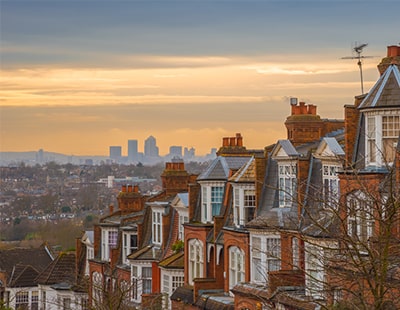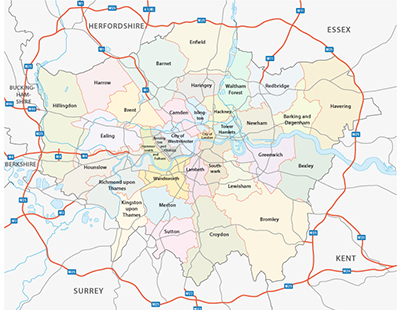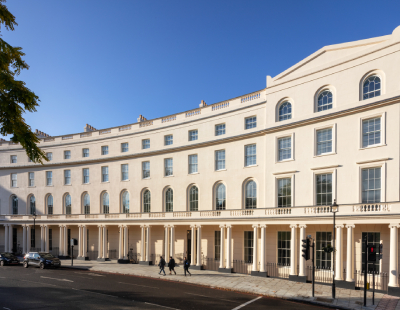Jennet Siebrits, UK head of residential research at CBRE, said: “Regeneration can greatly improve an area and the quality of life for its residents. CBRE studied the effect of regeneration on local property markets in London and found that house prices within a 750-metre radius of a regeneration zone grow faster than the wider market, by up to 3.6% per annum on average.”
She said that regeneration projects tend to be ‘radical interventions’, requiring substantial investment from both public and private sectors.
“They span from rejuvenation of existing areas like London's Southbank, to the creation of new neighbourhoods like the Olympic Park in Stratford,” Siebrits added. “They bring enhancements to the public realm, connectivity and local amenities, and can transform an area to a more desirable place to live in. As a result, demand for homes around the regeneration zone tends to increase.”
Siebrits said that CBRE’s research found that price growth around regeneration zones consistently outperforms the wider market. Measured from the very beginning of the regeneration through to the present day, house price growth within 750 metres of a regeneration zone was 1.5% higher per annum than the local authority average, the research revealed.
“This premium increases with time,” Siebrits continued. “Measuring the period from around a quarter into the regeneration programme to 2019 results in an annual uplift of 3.6% on average. This is what we regard as the 'realisation point' in the timeline of a regeneration programme. By this point, the overall aesthetics of an area have started to improve, the first residents have moved in and new amenities are in place.”
All of the the regeneration projects included in CBRE’s study form part of ‘Opportunity Areas’ which are designated by the Greater London Authority (GLA) for large-scale development.
How was the research carried out?
CBRE examined the price growth of properties within a 750-metre radius of the regeneration zones in question, excluding the regeneration area itself, and compared this with the local authority average to calculate the premium associated with the regeneration.
Properties in the actual regeneration zones were excluded, because new homes typically command higher prices than older stock and this could inflate the growth premium.
The highest uplift in house price growth in the study resulted from the regeneration of Woolwich and Royal Arsenal Riverside, with a premium of 7.6% from the point of realisation. Stratford was also a high-performer, attracting a premium of 5%.
James Bearryman, senior director at CBRE Residential, argues regeneration is about much more than new housing, insisting that it’s also about creating spaces for people to ‘live and work in happily’.
Alongside new homes, Bearryman says regeneration schemes typically lead to improved parks and public spaces, and revived retail, leisure and work centres.
“That's why the benefits are felt more widely than just by those living in the immediate regeneration zone, as our study of the impact on house prices shows,” he said.
“In London, infrastructure has been a big part of driving successful regeneration, as we can see in Woolwich and Royal Arsenal, which was the area with the highest house price uplift in our study. Investment in transport opens up previously overlooked areas to new investment and development.”
Bearryman says the regeneration of Woolwich and Royal Arsenal Riverside has ‘been really exciting to watch evolve’.
Twenty years ago, much of the riverside area was derelict, brownfield land. Since then, however, the area has undergone a huge physical transformation, in line with an ambitious masterplan. This has introduced modern apartments and new retail and cultural areas, mixed with restored Georgian buildings, paved squares and landscaped gardens.
“Woolwich has traditionally been connected to North London by the foot tunnel and ferry, with links into the City and Canary Wharf by DLR and railway,” Bearryman explained. “But the arrival of Crossrail and the new station has helped drive continuing change, and once the Elizabeth Line opens, Canary Wharf will be only seven minutes away, and the City can be reached in fourteen minutes.”
Since late July, Property Investor Today has been running a series on London’s regeneration hotspots – from Old Oak Common and Battersea Power Station to White City, Nine Elms and the Royal Docks – to understand better how the capital is being transformed by major projects.
The final part of this series, published in December, will focus on the renovation of Whiteleys Shopping Centre.






/ElizabethLine2-400x310.jpg)


.png)

.jpg)








Join the conversation
Be the first to comment (please use the comment box below)
Please login to comment